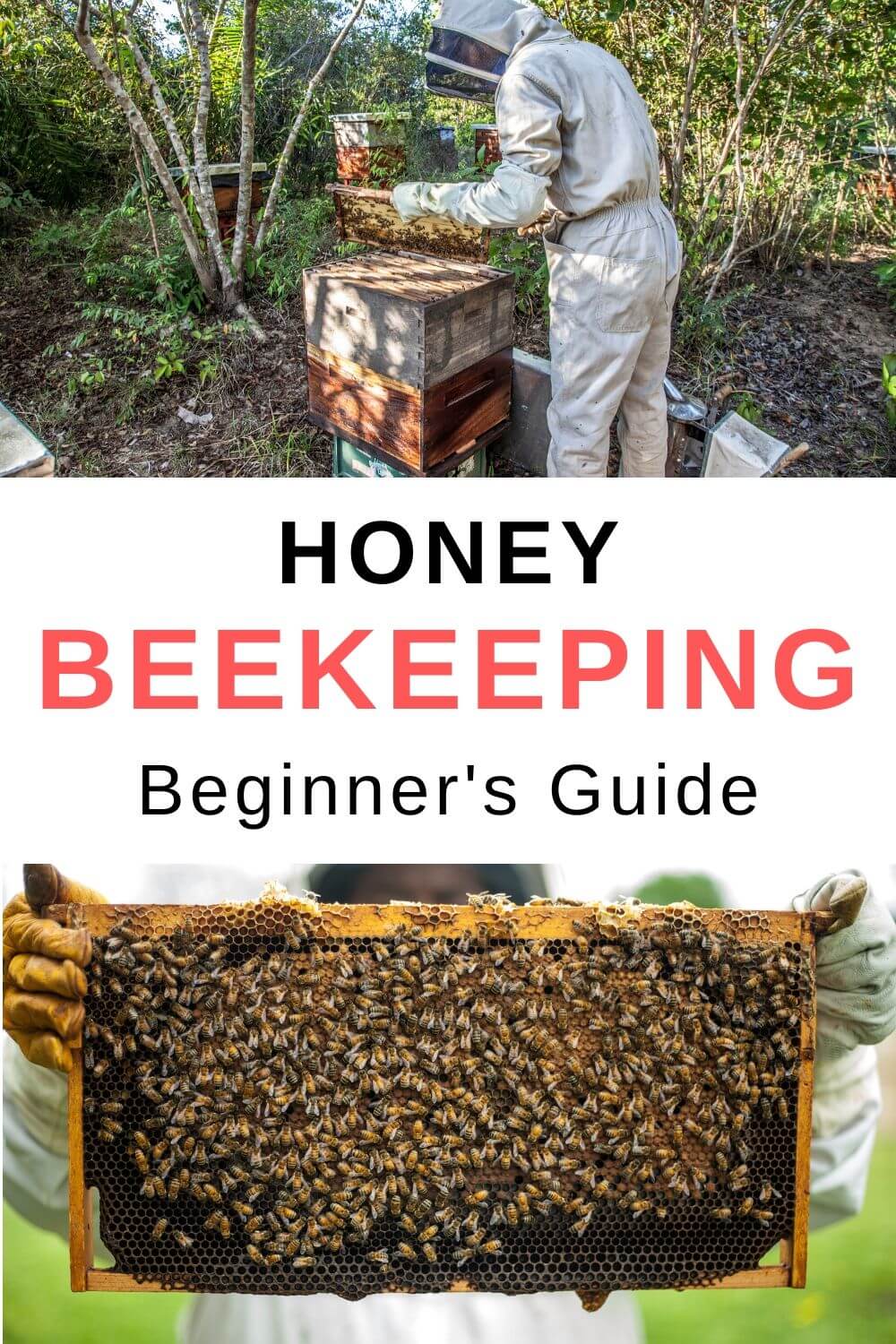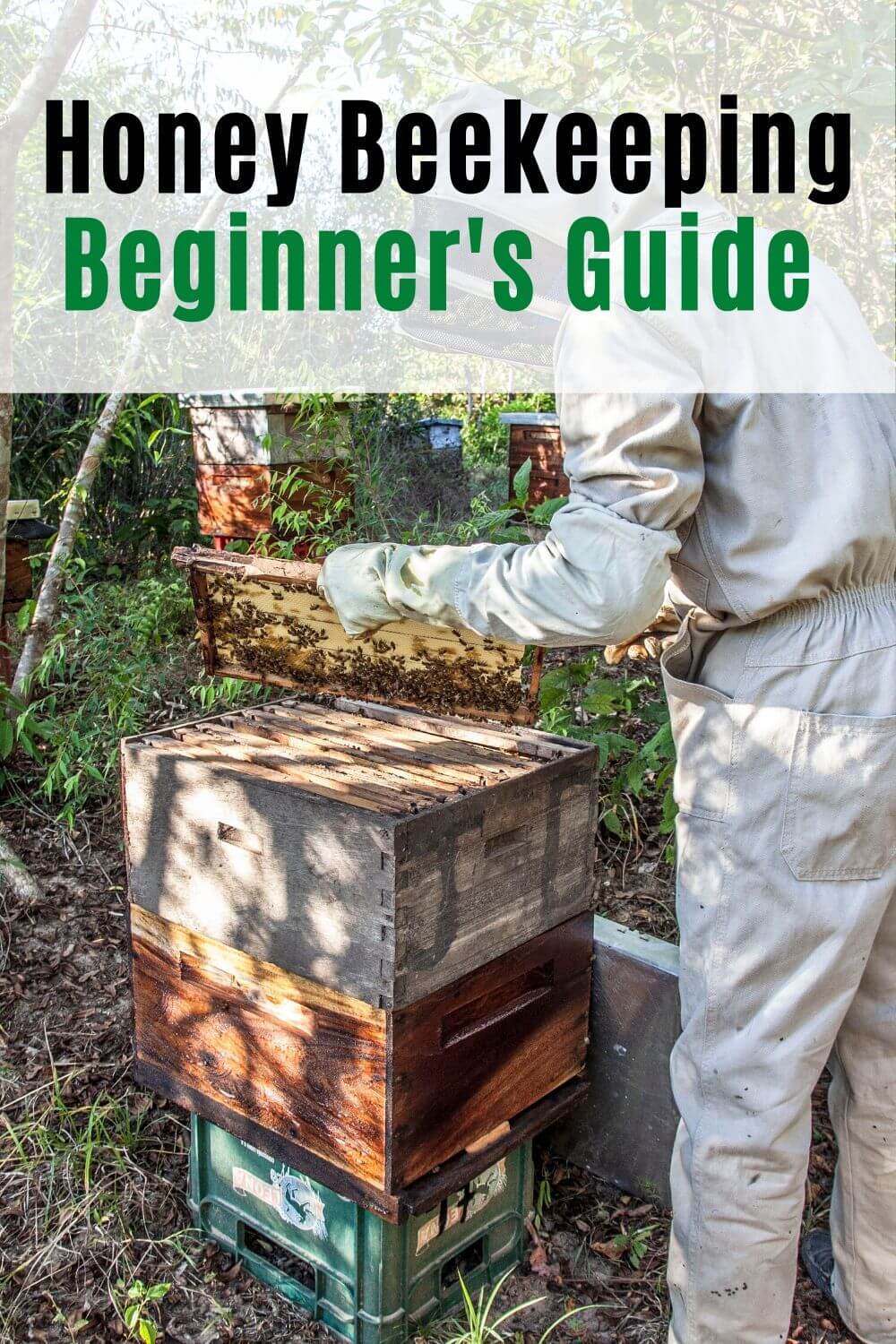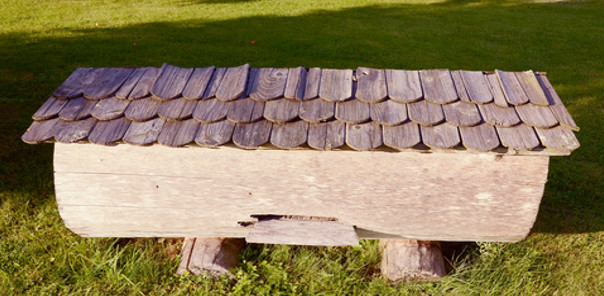Beekeeping is the worlds oldest recorded occupation.
So, now you’re wondering if there is money to be made in honey. In this post, I will provide you with honey beekeeping for beginner’s guide, in hope of helping you decide whether beekeeping is for you.
So, what type of person becomes a beekeeper? The following qualities are those a successful beekeeper has to have:
- Calm demeanor – Bees can sense fear, so making sudden movements around bees will only serve to upset them causing them to react by attacking the only way they know how.
Worrying about being stung can be a lot more problematic for you as a beekeeper than actually getting stung.
- Flexible thinking – You need to be able to bounce back from the disappointment of losing bees, and maybe even a couple of colonies. Failures happen.
Losing a colony can be devastating but you can also learn from your mistakes.
Be ready to do the necessary researching in order to determine what happened, and take the necessary steps to not repeat mistakes made previously.
- Curiosity – This characteristic will help you learn to keep a close watch on your hives in hope of preventing and/or turning a bad issue around, helping you keep your bees safe.
You will need to inspect your hives on a regular basis to make sure your bees are thriving.
If your hive goes down in population, then chances are that your queen bee is no longer healthy.

- Independent decision-making – There is no magic to honey beekeeping, and in order to be successful you really do need to be taking advice from certified beekeepers.
If any advice that you are offered doesn’t sound right, research it.
Critical thinkers tend to make better beekeepers because they are inclined to think over the information they are given to work with, and then make their decisions from there.
In other words, they make informed decisions.
- Humbleness – When a beekeeper is lost about any issue that their colony may be experiencing, they seek out the necessary help in solving their problems. No one beekeeper knows everything.
- Patience – According to the Ontario Beekeepers Association, if you are a small business beekeeper, you can make money selling honey… but, you will probably be more apt to be only breaking even rather than earning a profit, specifically in your first few years.
How to Inspect a Beehive
For those who are wondering what propolis is, it is what the bees make from resin that they collect from trees and use to stick the frames in place, the boxes together and keep the box lid in place.
This substance is highly sought after, as it is said to have health benefits such as antibacterial and anti-inflammatory properties.
The queen cell (also called a supersedure cell) is created for a potential new queen bee.
Before you continue, I need to inform you that I receive compensation if you use my affiliate links here, and eventually I may earn enough to buy a couple cups of coffee.
7 Things to Think About Before Becoming a Beekeeper
- How are you planning on procuring bees for your hives? Will you be buying bees or depending on capturing swarms?
- What type of hive will you use, horizontal beehives or vertical beehives? Lifting 30 to 70 pounds, depending on the style of hive you choose to use, will get to be very wearing on your back.
One frame can hold up to 5-6 pounds of honey.
- Can you learn to be calm around a colony of bees? Getting stung by a bee will happened, it is inevitable.
And, you will learn to NEVER drop a box or a frame of bees, which would make things really bad for you. Besides this, bees will sometimes become trapped in your suit.

- It will cost you about $500 or so to get started in beekeeping when choosing the more modern Langstroth hive, though there are cheaper alternatives.
- Any swarm of bees found in your neighbourhood will be assumed to be your bees. In order to keep your neighbours happy, you will need to learn how to catch swarms of bees once they are known.
Once you become known for removing swarms, your neighbours will start letting others know of you whenever others have bees located in different areas on their property where they are not wanted.
You may even find that you have to start saying “no” to removing bees from locations that you are not skilled at removing them, such as extreme heights.
- The area that you intend on using to set up your hive needs to have a supply of nectar and pollen producing plants from the spring and straight through until fall, as well as a nearby source of water.
Too few plants within two square miles of your hive could mean the death of the colony from starvation. Urban beekeepers have been known to use small lots such as 110’ x 60’. The space needed will depend on the pollen sources available.
- Breeding hardy bees will need to be your long-term goal to help ensure you keep your hives well populated, and to help guarantee bees continue on planet earth, so do NOT be using chemicals at all, anywhere.
Basic Equipment First Year of Beekeeping
Using a smoker calms the bees by confusing them because it stops them from communicating. They communicate using pheromones received by their antenna. Blocking this stops one frustrated bee from setting off the entire hive.
Over using a smoker could tell the bees a fire is near, so they eat honey in preparation to leave.
Using Yellow Jacket wasp traps and having a strong hive are they easiest ways to combat the wasps.
You will want to see your bees defend their hive, but you don’t want aggressive bees, as there is a distinct difference.
Bees do not only sting, they can bite too. They can also work together in a group ball to over heat any pest of their hive through their shared body heat.
There are horizontal beehives and vertical beehives. The horizontal beehives make it easier to tend to especially by those of you with back issues.

Be sure to set your hive entrances in different directions and out of the wind. Make the entrances especially colourful.
There is a good reason to have your beehives being different in colour as it makes it easier for bees to identify their own hives.
So, the more unique you can make your beehive boxes, then the better it will be for your bees to find their way back to their hive.
Keep the hives level so the bees will keep their honeycomb building within the frames, as bees build according to gravity.
If you plan to have more than one hive, be sure to separate them by at least 100 feet apart, and set them randomly apart rather than all in one row. In the wild, bee colonies setup their hives easily a half a mile apart, in order to minimize drift and the transference of disease.
A bee consumes approximately eight pounds of honey for every pound of wax created.
Many times, bees make way more honey than they actually use.
They have even been known to desert the honey they have collected once the new spring flowers are available to extract pollen from.
Honey comes in all colours depending on the nectar source.
However, when looking at your frames, the lighter combs are typically the newer combs of a hive, and you will find the darker combs to be the brood combs, due to the larva making a cocoon in the cell.
Honey bees reduce the amount of water in the nectar to about 17% which makes the nectar into honey.
They then cap the honey cell with wax to save it for consuming later.
Only nectar and honey should be found in your honey super box, which would be the box above a queen excluder that the bees can fill with honey.
However, if you are finding pollen (bee bread) then you need to investigate further as you may find that you have eggs in your super box.
If you ever break a honeycomb from the frame, you are not to fret.
Simply leave it where it falls because the bees will clean out the honey and rebuild the honeycomb back inside the hive.
Once they have had the opportunity to do that then you can pick up the remaining wax, to use it to make a candle or wood polish with.
Never open a hive if the outside temperature is less than 60°F or 15.5°C. This is to prevent the death of the brood.
When the brood gets chilled, you will see the worker bees pull out the brood and move it out of the hive. When this happens, you have lost your next set of emerging bees.
A worker bees life cycle is as follows: 3 days as an egg, 4-8 days as a larva, 9-21 days capped. On the 21st day the worker bee emerges.
The worker bees are female and they are a fertilized egg laid by the queen, whereas the drones are males and are from unfertilized eggs.
Depending on the needs of the hive, the queen bee decides which type of egg she lays.
The drone’s cells are approximately 6.35mm in size and larger than the worker’s cells, which are approximately 4.6 – 5.1mm in size.
When you can see eggs (that look like a grain of rice) and larva then you know there is a queen in the hive.
For geographic areas that experience winters, you will need to have two high body brooding nest boxes so that the bees will be able to have enough stored resources (honey) to survive the winter.
The Varroa mite and the small hive beetle can make beekeeping a bit more frustrating at times but there are new gadgets like the beetle blaster to help you deal with these two relatively new invaders.
Is Your Hive Ready to Swarm?
Harvesting Honey from Beehive
You should expect your bee population to have grown to at least four times that of what you started with.
The top super box is where you will be extracting your honey from.
Typically, honey is harvested from July to September, though the season may be longer in warmer climates.
The minimum amount of honey that you want to leave your colony to survive on for the winter is 60 pounds.
In order to guesstimate this amount, you can check the amount of honey stored in the brood chambers.
If a deep frame full of honey weighs about 6 pounds, the bees will need 10 of these for the winter.
So, 2 shallow frames will equal 1 deep frame.
A new hive needs to have two brooding chambers with one box completely full of honey, with the lower box having the outer frames full of honey.
7 Mistakes Beekeepers Make
- Lifting the lid off straight when it is attached with burr comb, causing frames to come with it and then crash down on the bees… or dropping a frame and angering the bees.
- Improperly made boxes where the outside walls are too thin making it impossible for the bees to survive winter.
- Improperly spaced frames, be it leaving too large a space between frames or too small a spacing causes issues for the hive and the beekeeper.
- Using strictly commercial stock bees which have very little resistance to viruses and natural pests, as well as not being adapted to winters.
You need to catch a swarm of bees already with the genetics for your area.
- Too big or too small of a hive box. Too small and your bees will have no room for expansion.
Too big of a box and it becomes too difficult for your bees to heat in the winter, clean and protect.
After a lot of researching, it was been determined that a 10-gallon box is ideal size for bees.
- Going into beekeeping thinking that you will make thousands of dollars once you start getting honey from your hives.
- Not putting all of the frames back in one of the boxes. The video below will show you how to fix this issue.
Cleaning Up Stray Comb
Feeding Bees in Winter
Inspecting a Beehive in Winter
So, is there money in honey?
You bet there is, but not so likely in the first few years of your beekeeping due to the learning curve being different depending on the person who decides to be a beekeeper.
Should you have any questions or comments that you would like to make regarding this honey beekeeping for beginner’s guide, please do leave me a comment below.
Sources:
Natural Beekeeping Workshop
38 Free DIY Different Beehive Plans
Credit for Header: image by ID 155324860 © Rimma Bondarenko | Dreamstime.com





